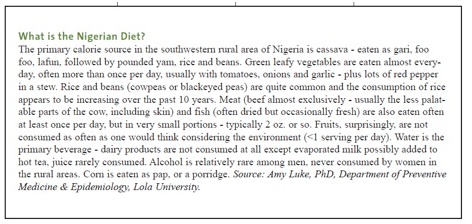Is Exercise the Key to Weight Control?
 With 2 out of 3 American adults overweight or obese, it is becoming increasingly clear that current strategies to lose weight and keep it off are not very successful. It is difficult to solve a problem if what is causing it is unknown.
With 2 out of 3 American adults overweight or obese, it is becoming increasingly clear that current strategies to lose weight and keep it off are not very successful. It is difficult to solve a problem if what is causing it is unknown.
The reason people develop excessive energy stores of body fat is simple from the perspective of physics. The laws of physics tell us losing excess body fat means creating a negative energy balance by either burning more calories with activity or exercise and/or reducing calorie intake. However, from a biological perspective it is more complicated because when people eat less or exercise more their appetite generally increases. Hunger motivates people to eat more and this obviously undermines people’s ability to stick with a calorie-restricted diet.There are human populations where obesity is far less common than in America. We have also seen that the incidence of obesity increases as these societies adopt a typical Western diet and often become less active. Therefore, it cannot be genes alone but something about the typical modern diet and lifestyle that is promoting obesity. A study comparing the Pima Indians in Mexico and Arizona showed the average American Pima weighed 60 to 65 pounds more than the average Mexican Pima. Some believe this large difference in average body weight between the two Pima populations is largely due to the much higher activity level of the Mexican Pimas. However, the American Pimas eat a diet much higher in fat and animal products and much lower in fiber than the Mexican Pimas. So it is seems likely that the much greater body fat stores of the American Pimas are due to both differences in diet as well as activity level. But which is more important?A recent study examined energy expended with daily activity and body composition in African American women in the Chicago area and a similar group of women in rural Nigeria. This study precisely measured daily activity and total energy expended in both populations using double-labeled water. They found no significant difference in calories burned daily between the two groups. However, precise measurement of body composition revealed the African American women had twice as much body fat as the Nigerian women. The average difference in body weight was 57 pounds (184 pounds in Chicago versus 127 pounds in Nigeria). The authors conclude that their data “…suggest that mean activity energy expenditure does not vary substantially between contemporary social groups with low and high prevalence of obesity.”1While this study did not report dietary intake, the Nigerian women must have consumed fewer calories. Dr. Amy Luke at Loyola University, the lead author in this study, informed me that the Nigerian women consumed a diet in which most of the calories came from minimally processed starchy roots (cassava, yams), rice, beans, corn, and leafy vegetables. Their intake of animal products was limited about 2 ounces a day of mostly beef or fish. The Chicago women consumed a typical modern diet high in fatty animal products and refined grains, sugars, and fats and relatively little fiber.Since the Nigerian women were not “dieting” by consciously restricting food intake it seems likely that their diet kept hunger at bay at a much lower calorie cost than a typical modern diet.
Bottom Line: This study suggests that what people eat may be the most important lifestyle factor contributing to the growing obesity epidemic in the United States. Indeed, in all societies where traditional diets high in complex carbohydrates are being displaced by a modern diet rich in fatty animal foods, refined carbohydrates and oils, the prevalence of obesity increases. This appears to be true regardless of whether or not the calories burned with daily activity falls dramatically or remains about the same.By James J. Kenney, PhD, RD, FACN.References:1. Luke A, Dugas LR, Ebersole K, et al. Energy expenditure does not predict weight change in either Nigerian or African American women. Am J Clin Nutr 2009;89:169-76